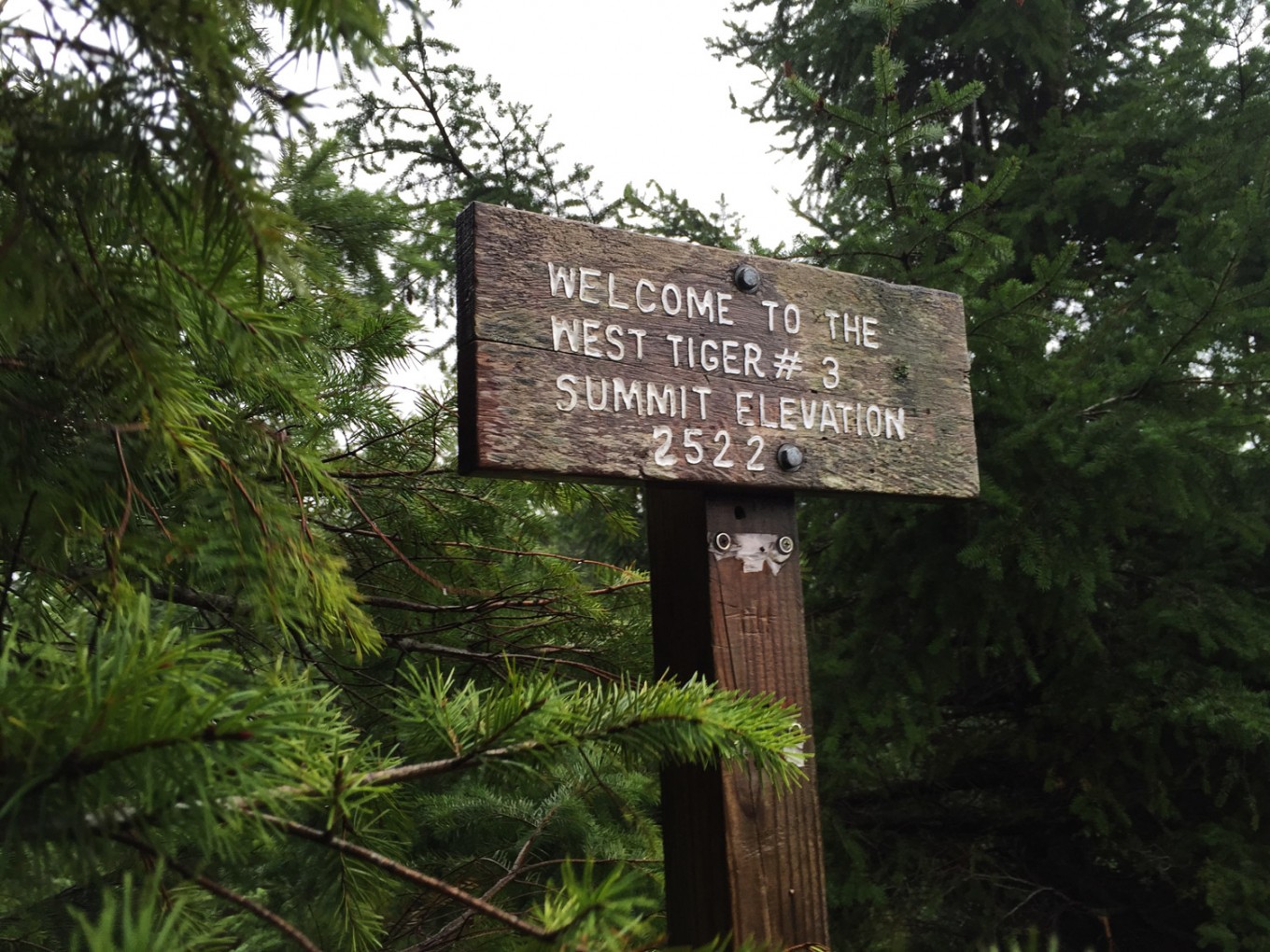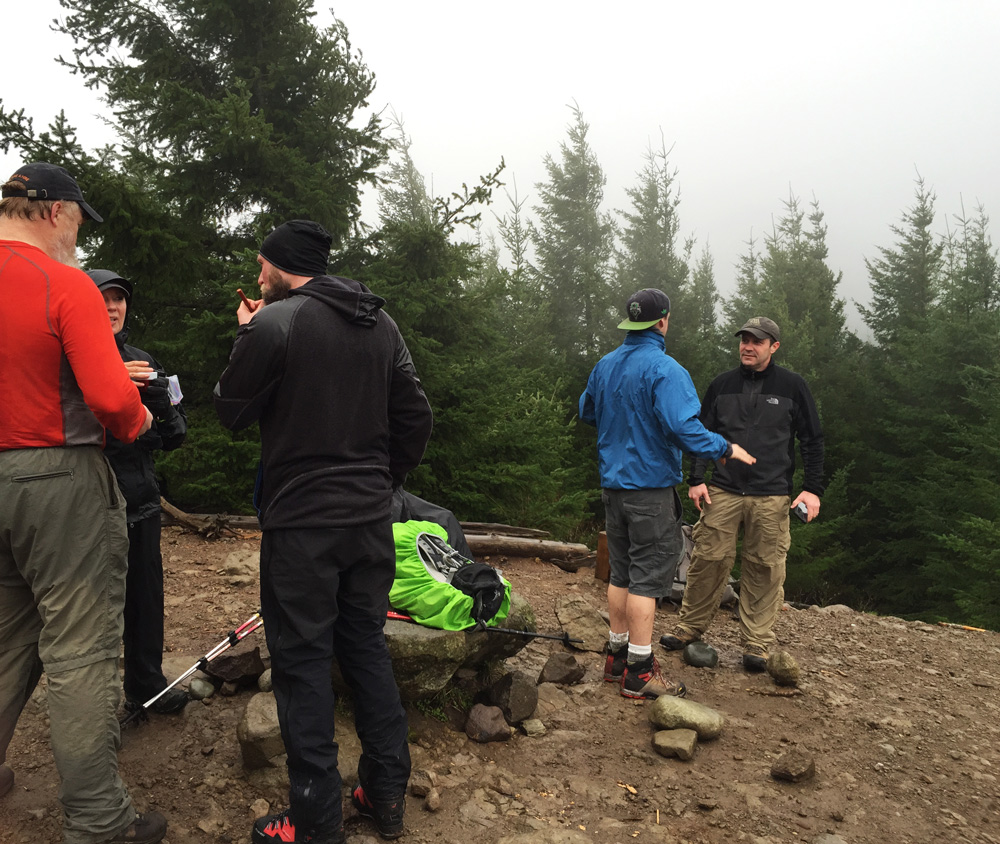
Training: Tiger Mountain
About two weeks after our last training hike at Rattlesnake, our second took place at the popular Tiger Mountain trail just outside of Issaquah on Saturday, March 14th. This time the weather couldn’t be any more the opposite of the last hike. It had been raining all night, which continued well into the morning and the first half of our hike up to the summit at an easy 2,522 feet. And with the rain came more humid conditions. So with combination of the wet, humid and mild conditions and head-to-toe rain gear, the hike was going to be far more mentally testing than the last for those of us who decided to brave the weather for it. Fortunately, the gloomy weather also made the trail far less crowded than it could be under perfect conditions, and considerably less people than we witnessed at Rattlesnake just two weeks ago.
The hike itself is pretty easy with gentle inclines and little-to-no technical terrain the entire way up. Therefore, what you lose in technical training you have to gain in endurance. So being in the faster group, the first third was a quick pace through mud and standing water. Once your body finally gets warmed up sufficiently, the hike and pace gets considerably easier. But the one thing to be wary of in conditions like this is to ensure you don’t get your body temperature too high that you start sweating a lot, especially when you are wearing rain gear that reduces breathability of your layers and traps even more heat in. The result being that your light and medium layers are sweat-soaked, making you considerably colder once you do reach the summit and stop, where temperatures can be 10-15 degrees colder than where you started at the trailhead. Unfortunate for me my body generates a lot of heat and ends up sweating more than most, so this hike was a good test-run of my layer and rain gear choices to determine what works and what doesn’t. It was quickly evident that more expensive outer shells, like Arc’teryx, would perform far better in terms of breathability than the lower end basic rain gear I was wearing.
Upon nearing the summit the trees began to open up to offer panoramic views of the landscape beyond, which under the rain and clouds was pretty limited to probably less than a mile. Luckily the wind picked up as the front associated with the storm system that brought the rain was pushing through, which also meant an end to the steady rain from earlier. The wind combined with the cooler temperatures at the summit made you more conscious of keeping your body temperature controlled and preventing it from dropping too much and too quickly. My base layers were pretty wet, so I removed them and put on some dry layers I had in my pack, leaving the wet pieces out to dry briefly. The summit also offers us a good time to chat with others in the group, share stories and talk more about our upcoming climb.
After about 20-30 minutes at the summit, we were all ready to begin the decent and warm up after the endless wind and exposure was quickly making it too cold to remain there much longer. The decent back to the trailhead was a pretty quick pace, but it also allowed us to continue sharing our outdoor and climbing adventure stories with each other. Many of the volunteers that accompany us on these training hikes are pretty experienced when it comes to outdoor adventures, so it’s always good to pick their brains as much as possible.
Once back at the trailhead, we regrouped and went over any questions people may have regarding the climb or gear and quickly departed as soon as light rain began again. Overall it was a pretty easy and basic hike, and it was nothing in comparison to the amount of hiking and the overall mental challenge of what was to come in my navigation course field trip with the Mountaineers the next day. Needless to say, the conditions that next day for my field trip were far worse–all day moderate to heavy rain and colder temperatures–all while being out it in from 6am through 4pm.
Next training hike is another pretty easy one in two weeks: Little Si. Let’s just hope for better weather for that one.


